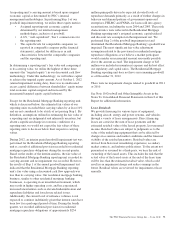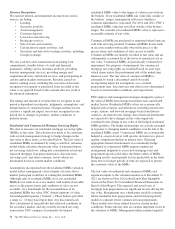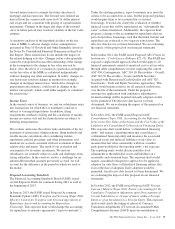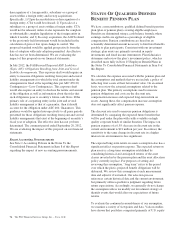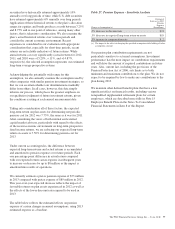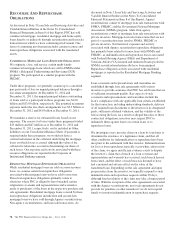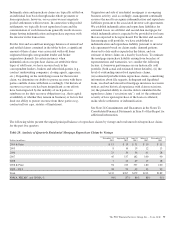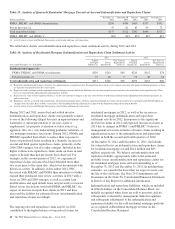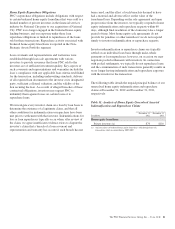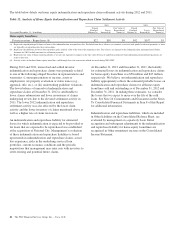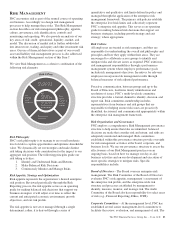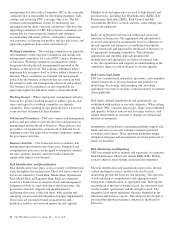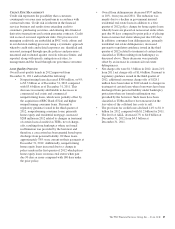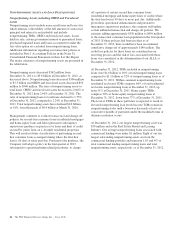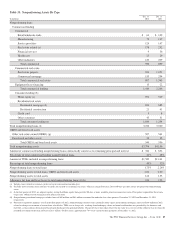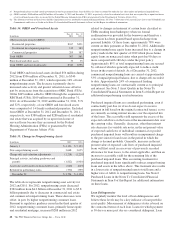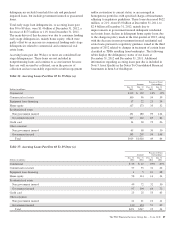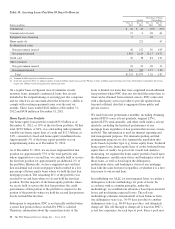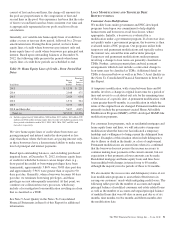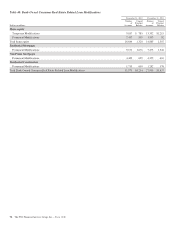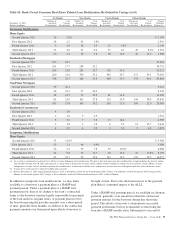PNC Bank 2012 Annual Report Download - page 102
Download and view the complete annual report
Please find page 102 of the 2012 PNC Bank annual report below. You can navigate through the pages in the report by either clicking on the pages listed below, or by using the keyword search tool below to find specific information within the annual report.
R
ISK
M
ANAGEMENT
PNC encounters risk as part of the normal course of operating
our business. Accordingly we design risk management
processes to help manage these risks. This Risk Management
section describes our risk management philosophy, appetite,
culture, governance, risk identification, controls and
monitoring and reporting. We also provide an analysis of our
key areas of risk: credit, operational, liquidity, market, and
model. The discussion of market risk is further subdivided
into interest rate, trading, and equity and other investment risk
areas. Our use of financial derivatives as part of our overall
asset and liability risk management process is also addressed
within the Risk Management section of this Item 7.
We view Risk Management as a cohesive combination of the
following risk elements:
Risk organization
and governance
Risk
monitor-
ing &
reporting
Risk
identi-
fication &
quanti-
fication
Risk control
and limits
Risk
philosophy
and principles
Risk appetite,
strategy and
optimization
R
i
s
k
c
u
l
t
u
r
e
Risk Philosophy
PNC’s risk philosophy is to manage to an overall moderate
level of risk to capture opportunities and optimize shareholder
value. We dynamically set our strategies and make distinct
risk taking decisions with consideration for the impact to our
aggregate risk position. The following principles guide our
risk taking activities:
1. Identify and Understand Risks and Returns
2. Make Balanced Risk Decisions
3. Continuously Monitor and Manage Risks
Risk Appetite, Strategy and Optimization
Risk appetite represents the organization’s desired enterprise
risk position. Reviewed periodically through the Risk
Reporting process, the risk appetite serves as an operating
guide for making balanced risk decisions that support our
business strategies; it will adjust over time to reflect the
current and anticipated economic environment, growth
objectives, and our risk profile.
The risk appetite is not set or managed through a single
determinant; rather, it is derived through a series of
quantitative and qualitative risk limits defined in policy and
managed through the application of the enterprise risk
management framework. The primary risk policies establish
the enterprise level risk limits and collectively represent
PNC’s enterprise risk appetite. This serves as an operating
guide for making balanced risk decisions that support our
business strategies, including growth strategy and exit
strategy, where appropriate.
Risk Culture
All employees are treated as risk managers, and they are
responsible for understanding the overall risk philosophy and
principles and how they apply within their areas. They are
encouraged to collaborate across groups to identify and
mitigate risks and elevate issues as required. PNC reinforces
risk management responsibilities through a performance
management system where employee performance goals
include risk management objectives. Incentives for relevant
employees incorporate risk management results through
balanced measures of risk-adjusted performance.
Proactive communication, between groups and up to the
Board of Directors, facilitates timely identification and
resolution of issues. PNC’s multi-level risk committee
structure provides a formal channel to identify, decision, and
report risk. Risk committees membership includes
representatives from business and risk groups that are
responsible for helping ensure risk issues are proactively
identified, decisioned, and communicated appropriately within
the enterprise risk management framework.
Risk Organization and Governance
PNC employs a comprehensive Risk Management governance
structure to help ensure that risks are identified; balanced
decisions are made that consider risk and return; and risks are
adequately monitored and managed. Risk committees
established within this governance structure provide oversight
for risk management activities at the board, corporate, and
business levels. We use our governance structure to assess the
effectiveness of our Risk Management practices on an
ongoing basis, based on how we manage our day-to-day
business activities and on our development and execution of
more specific strategies to mitigate risks. Specific
responsibilities include:
Board of Directors –The Board oversees enterprise risk
management. The Risk Committee of the Board of Directors
evaluates PNC’s risk appetite, management’s assessment of
the enterprise risk profile, and the enterprise-wide risk
structure and processes established by management to
identify, measure, monitor, and manage risk. The Audit
Committee of the Board also has responsibility for select areas
of risk (e.g., Financial Reporting, Ethics, ICFR).
Corporate Committees – At the management level, PNC has
established several senior management-level committees to
facilitate the review, evaluation, and management of risk. The
The PNC Financial Services Group, Inc. – Form 10-K 83


